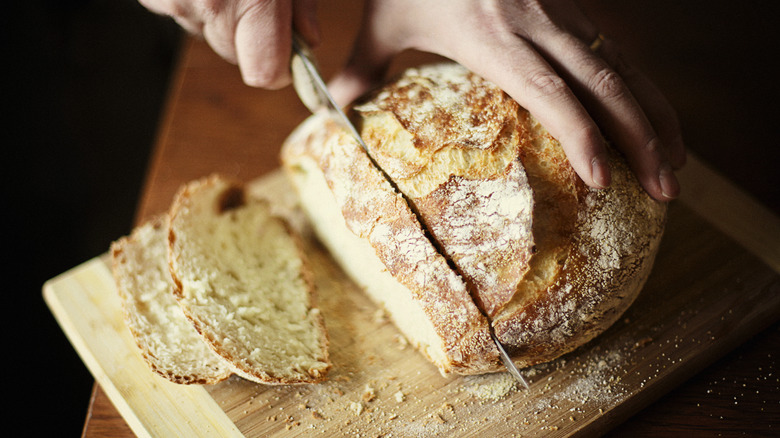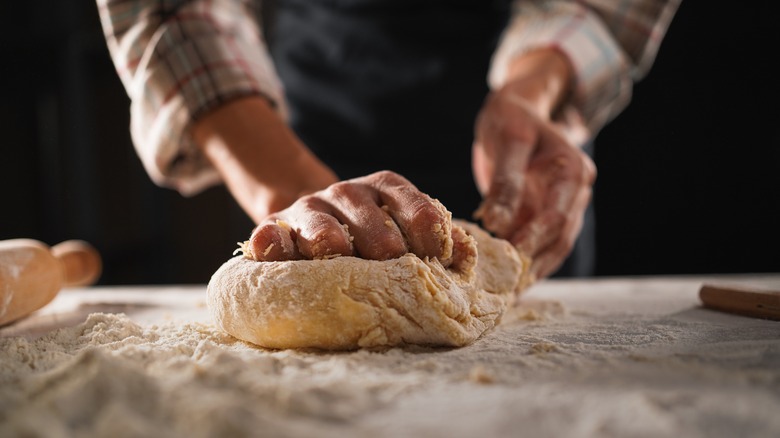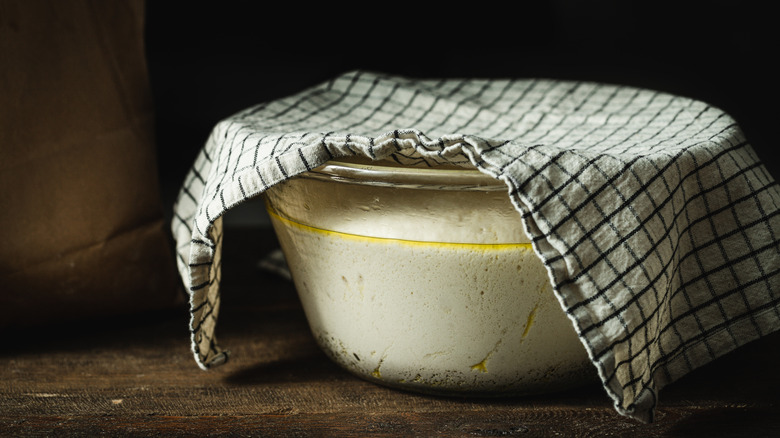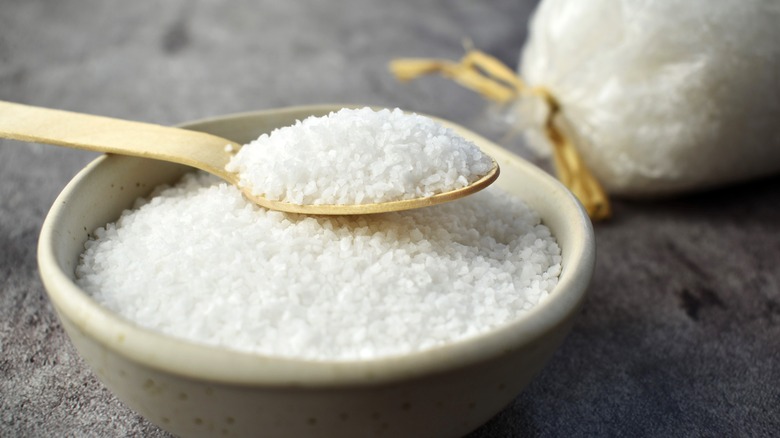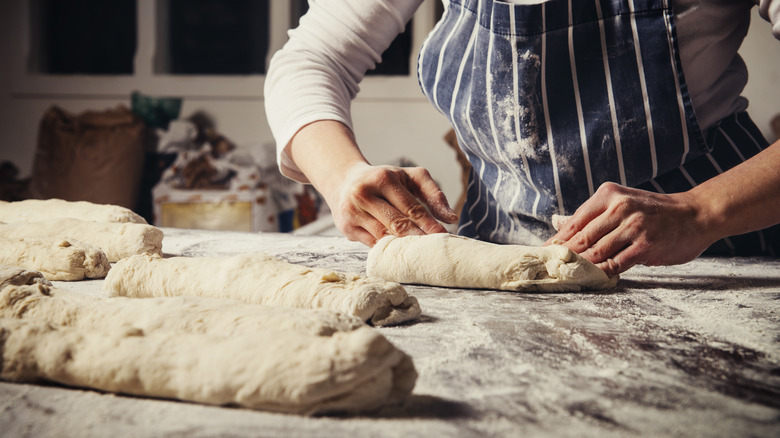4 Pro Tips To Improve The Flavor And Structure Of No-Knead Bread
Most homemade bread recipes call for a technique known as kneading, in which the dough is folded and massaged to mix the wet and dry ingredients together and evenly distribute the gluten. But this process can become rather tedious, not to mention painful for your hands and arms after a while. If you want to spare your forearms some major soreness, consider starting off with a no-knead recipe. In order to perfect the flavor and structure of our no-knead loaves, Food Republic sought the advice of resident baker Sheena Otto.
No-knead breads allow bakers to forego the traditional dough massaging, in favor of letting the dough rest for long periods of time to allow the gluten to develop on its own. The key to successful bread making is patience, especially in this case — and according to our bread expert, factors like the right size of bowl, the correct mixing order, and the ideal kind of salt can all make your experience that much easier. Otto shared four tips that first-time bread makers and total veterans alike should definitely keep in mind.
There's really no such thing as completely no-knead bread
Whether you are making a quintessential sourdough loaf or a super easy wheat bread recipe, the term "no-knead" can be a little misleading – you will have to knead your dough to some degree for the best results. Sheena Otto shared that every bread dough requires folding over at least a few times, before your loaf begins to proof.
"Work the dough a bit with your hands to get the gluten development going in the beginning," Otto told Food Republic. "The structure and shape of the loaf will improve exponentially by the end." Fortunately, no-knead recipes still don't call for nearly as much hands-on massaging as traditional versions, so this shouldn't cause a lot of soreness for your muscles.
The bigger the bowl, the better your bread
When you are pulling out all the ingredients you need to prepare a loaf of bread at home, don't forget the importance of the right container. An extra large bowl, even larger than you think you need, is essential to easy handling and rising, according to Sheena Otto.
Even though your bread dough only requires a bit of kneading when it is first mixed, Otto advised to use a large bowl for mixing and folding, to minimize cramping in the wrist. A big bowl will also leave ample room for your bread dough to expand when it is left to rise, without spilling over and causing a mess.
Only one kind of salt should be used in your bread dough
According to Sheena Otto, there is only one type of salt that should be added to your bread dough: kosher salt. This mineral is essential to building the fluffy texture in bread that we all know and love. The bread expert shared that kosher salt is ideal because "it dissolves faster than table salt or sea salt, and requires less work to mix into the dough." However, she also strongly emphasizes that you have to add the salt (and other ingredients) in a very specific order.
The right mixing order makes all the difference
Preparing no-knead bread dough in the right order is essential to achieving the perfect texture and flavor. Sheena Otto shared a step-by-step guide that begins by mixing water with yeast or one of the many types of bread starters. Let the mixture rest for up to five minutes, and then add the flour and mix. Otto puts emphasis on not adding the salt into the mixture until after it rests again, for at least 20 to 30 minutes.
There is also a proper technique for using the salt itself: "Add the salt by sprinkling it evenly over the top, spritzing with one to two sprays of water," Otto told Food Republic. "Then cut the salt into the dough with a bowl scraper, then mix until you have a pretty cohesive dough." The dough then rests for another 20 minutes; you fold it over once more; then you can continue with the rest of the recipe directions.
Otto said it is "worth it" to massage the dough slightly after the second rest, in order to achieve the best homemade bread possible. This technique does call for a bit more kneading than a typical no-knead recipe, but the better results speak for themselves.

